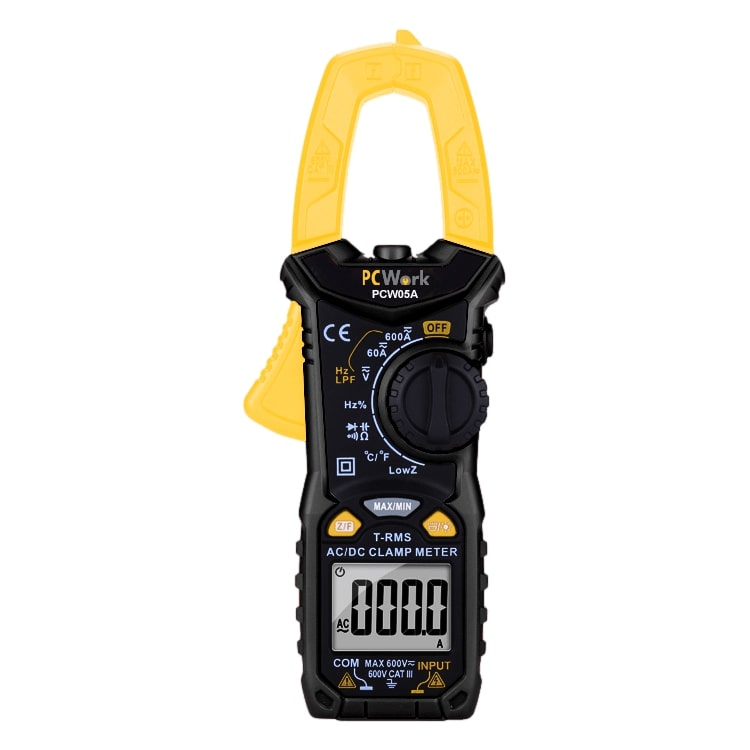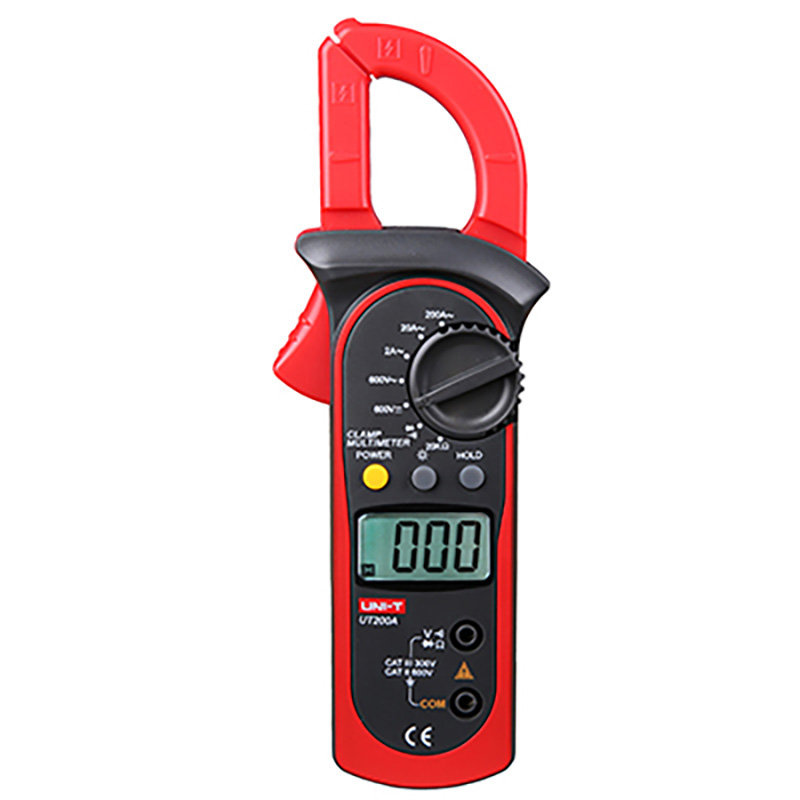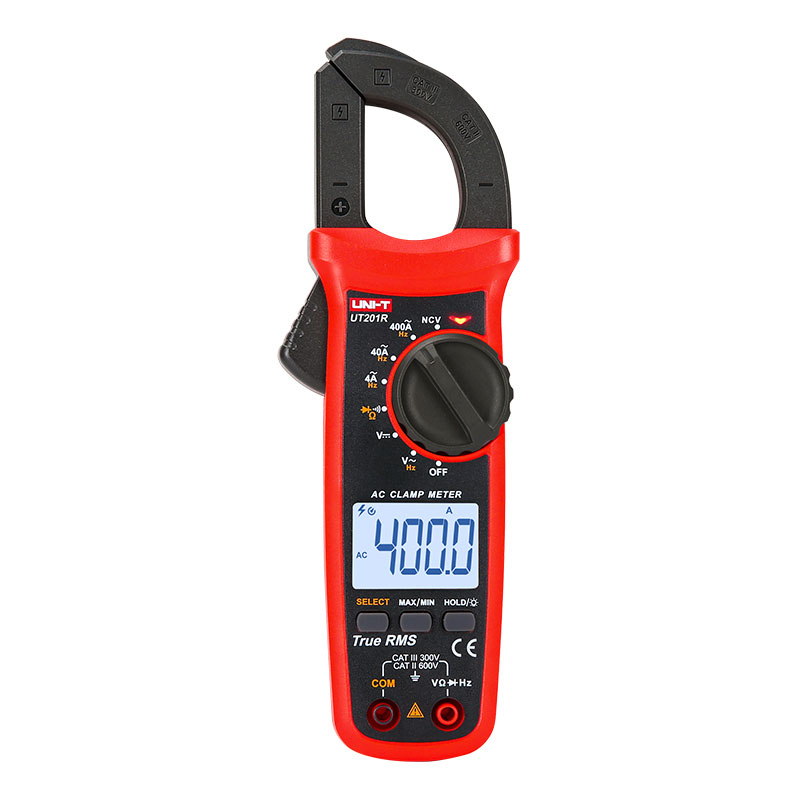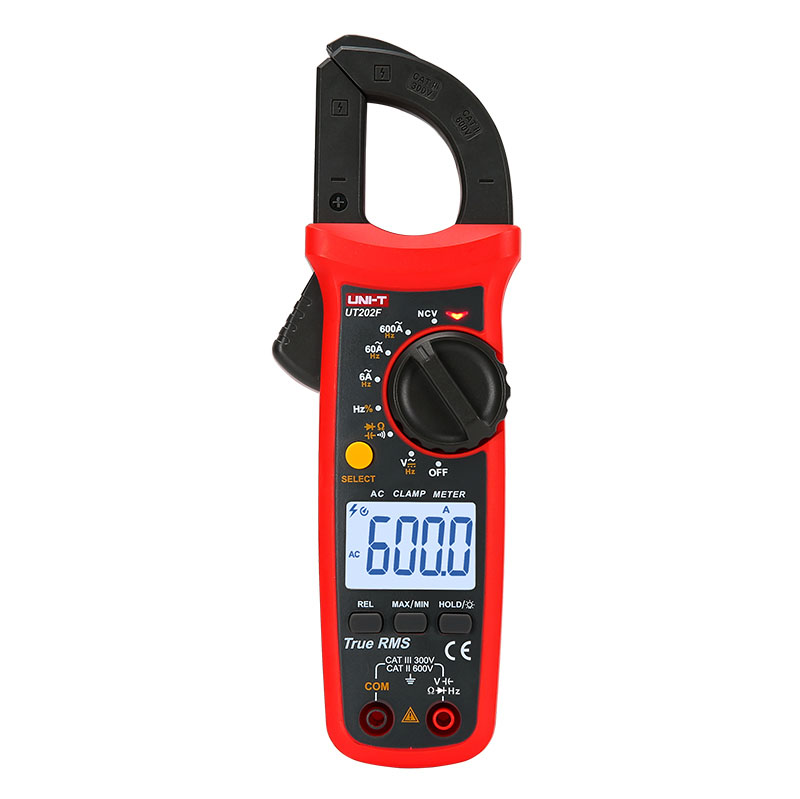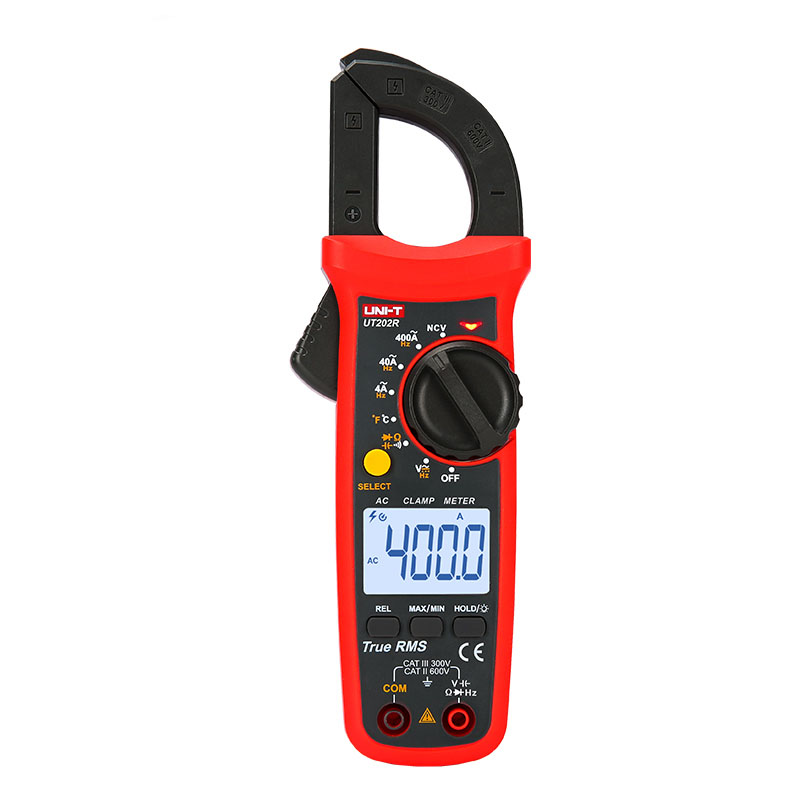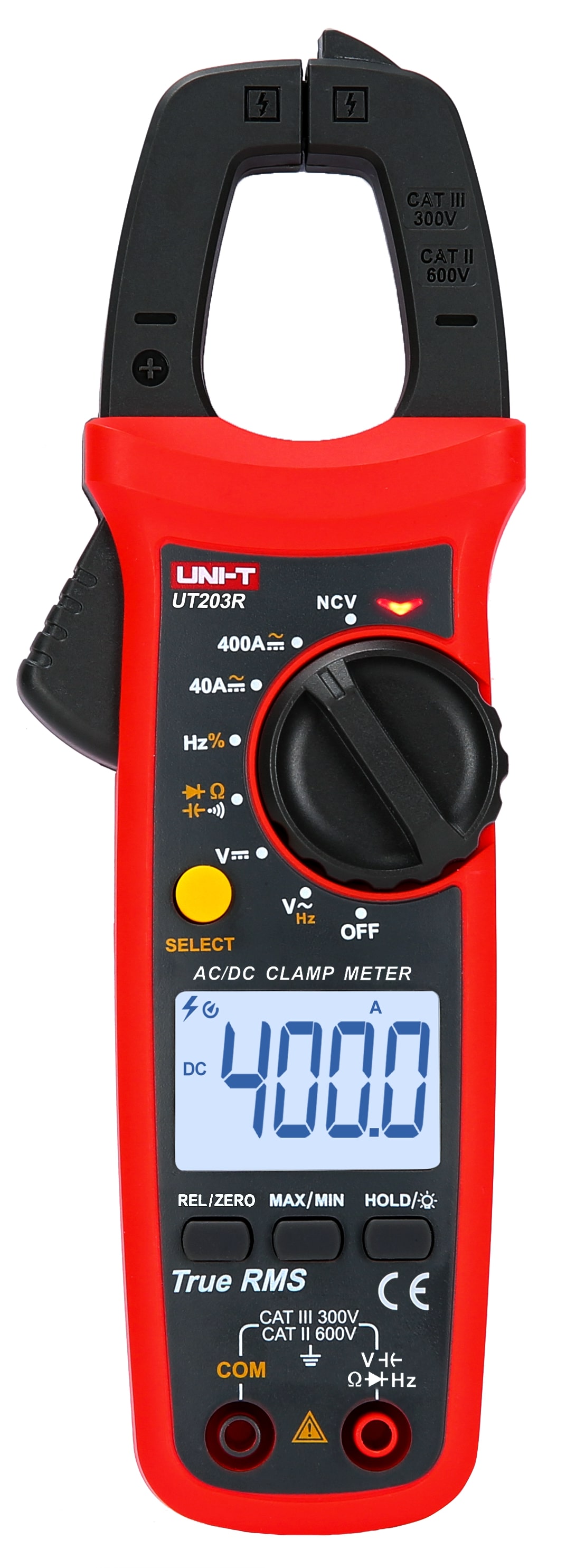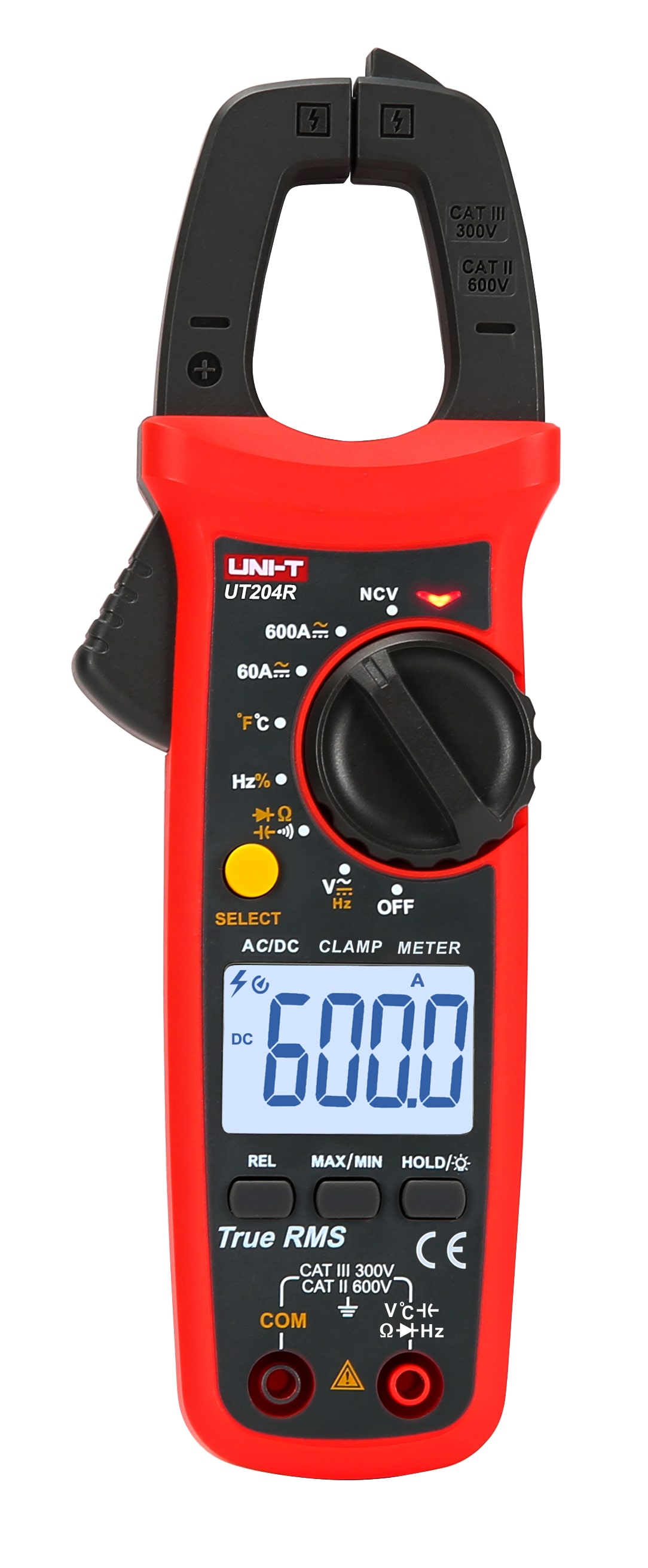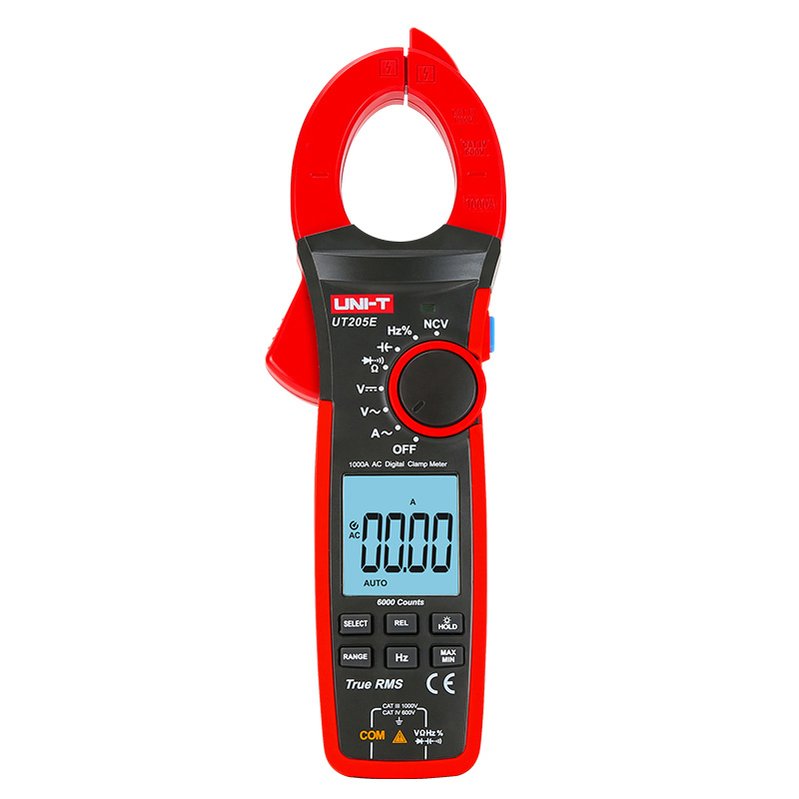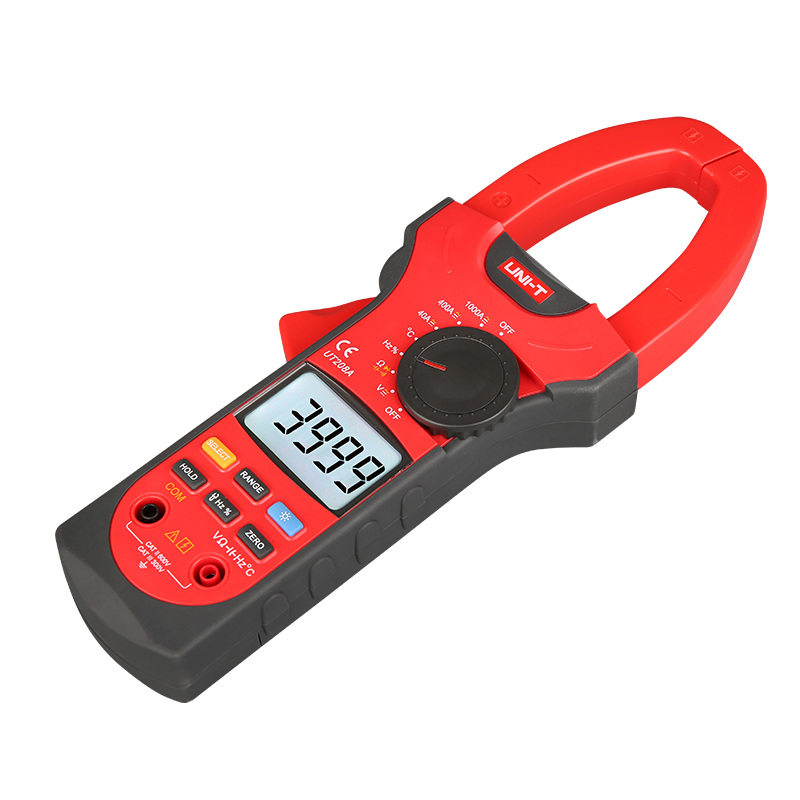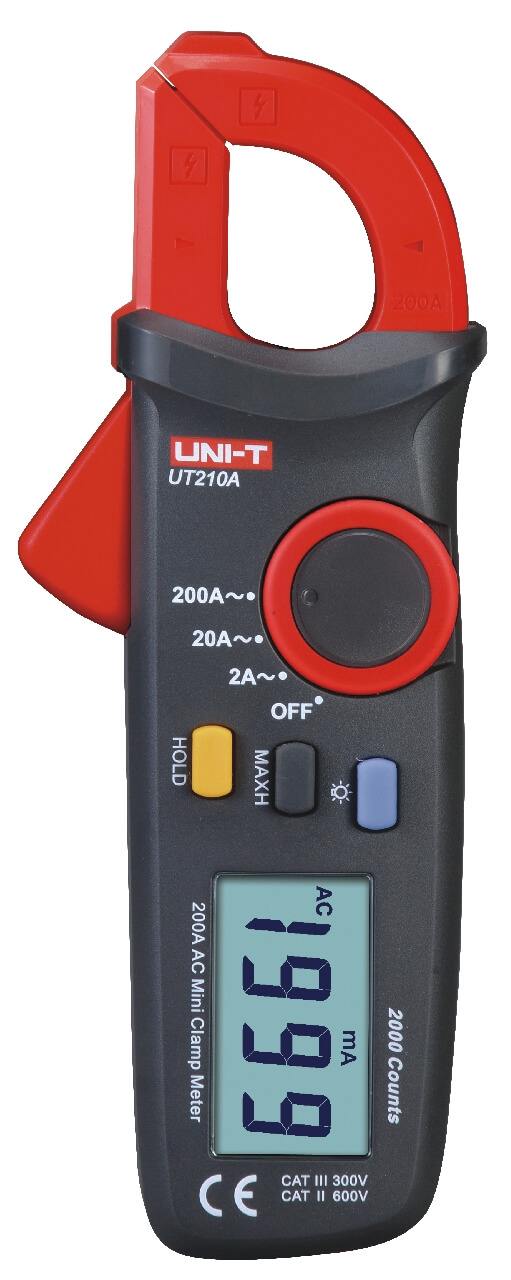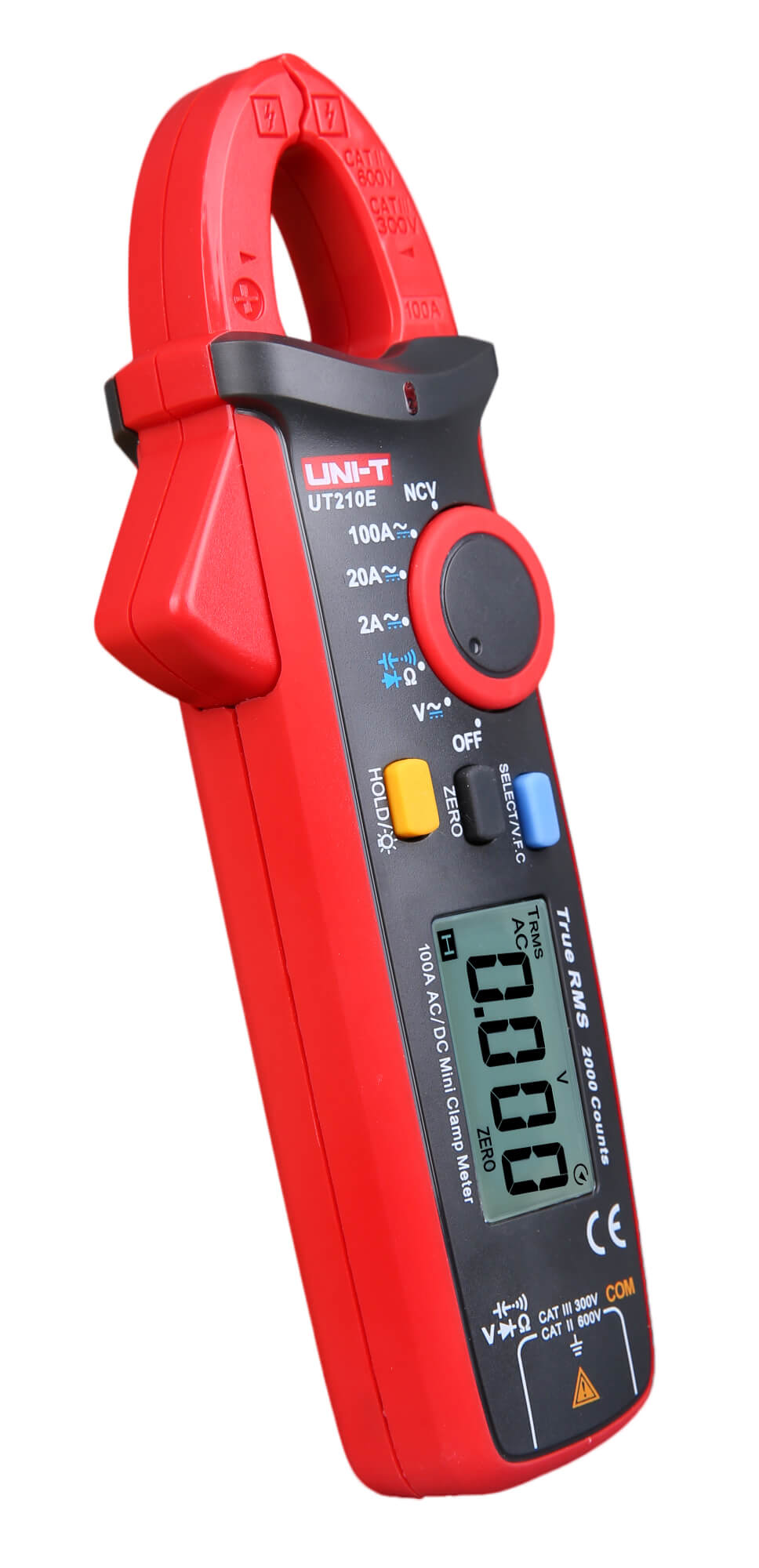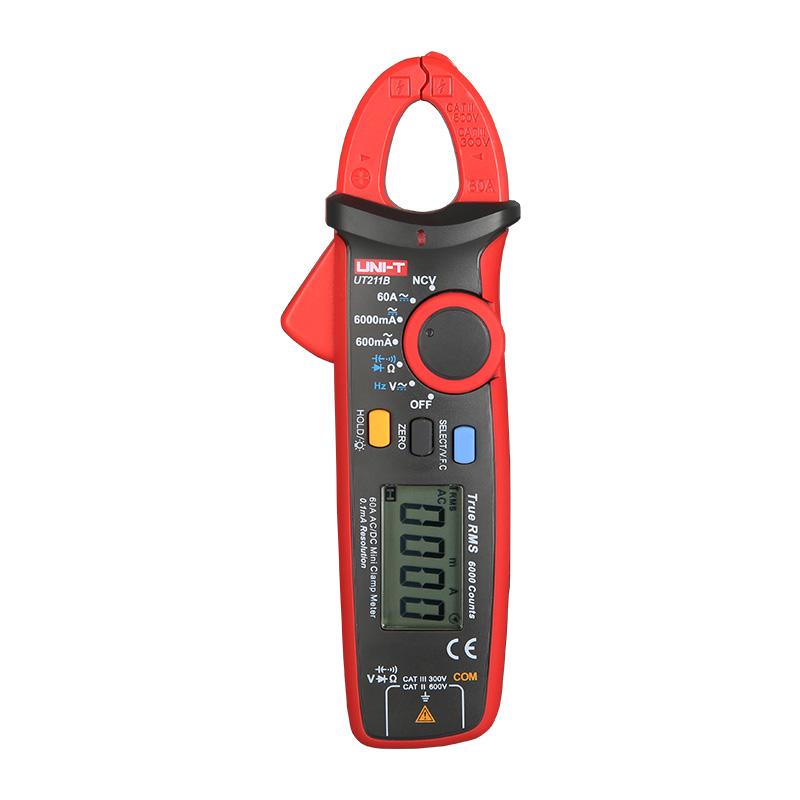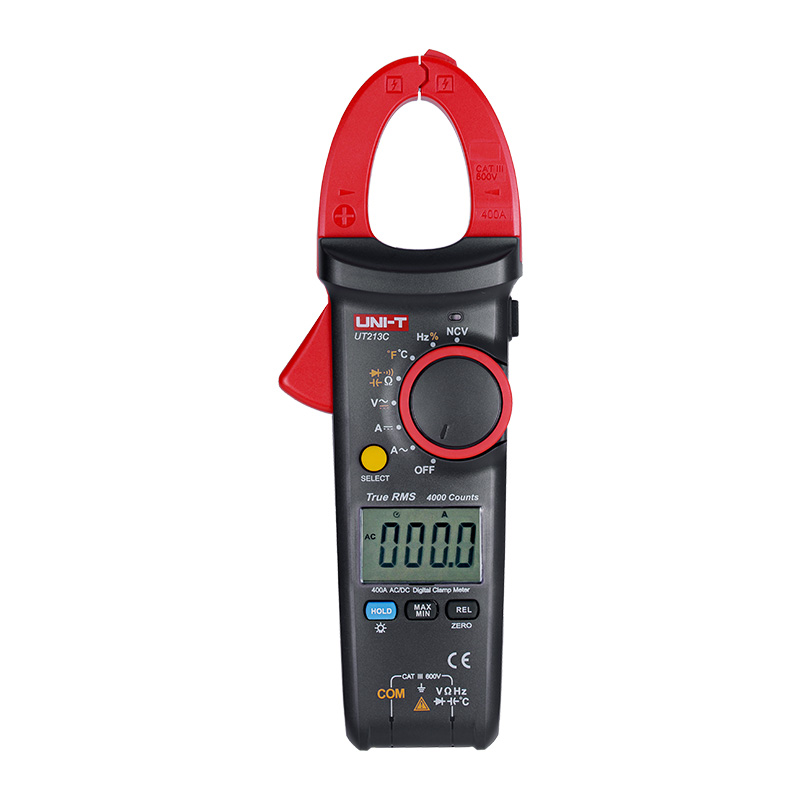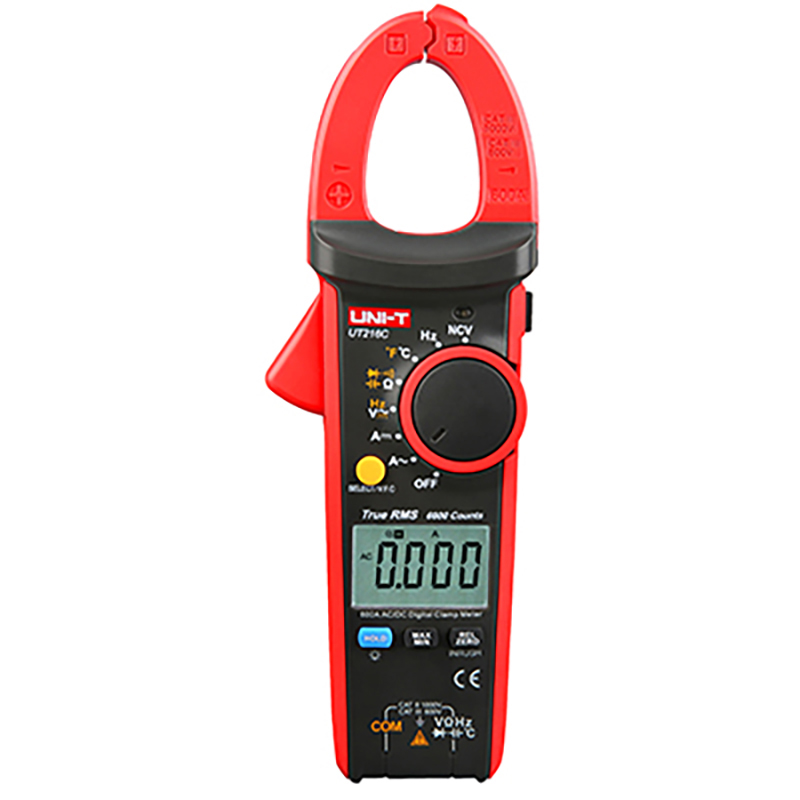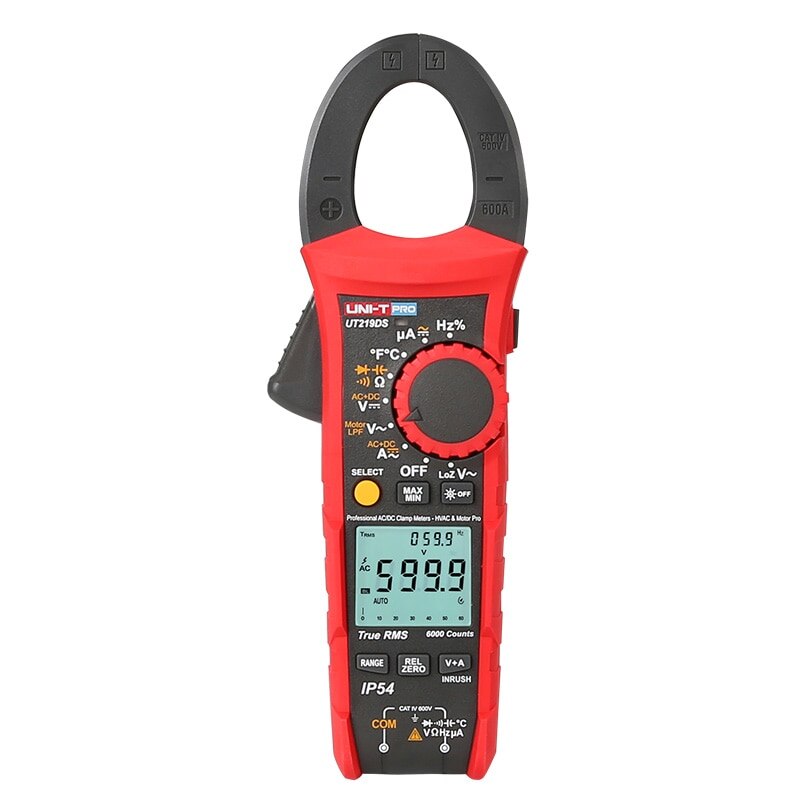Clamp Meters
- Power Supply
- Active Components
- Samwha Capacitors
- Workshop and Soldering Equipment
-
Measurement and Testing Equipment
- Multimeters
-
Clamp Meters
- Voltage Testers
- Environment Measuring Instruments
- Automotive Measurement
- Laboratory Power Supplies
- Oscilloscopes
- Wood Moisture Meters
- RPM Meters
- Earth Resistance Meters
- Capacitance Meters
- Insulation Resistance Testers
- USB Testers
- Cable Testers
- Wallscanners
- Laser Measuring Instruments
- Angle Meter
- Measuring Accessories
- Remote Controls
- Residual Current / Circuit Breaker
- Product num. : 202537
- EAN: 4270002353169
- Manufacturer number: PCW05A
-
Show more
-
From 1€39.50*
-
From 10€36.54*
-
From 25€34.76*
-
From 50€31.60*
-
From 100€29.00*
Available, delivery time: 1-3 days
- Product num. : 202553
- EAN: 6935750520086
- Manufacturer: UNI-T
- Manufacturer number: UT200A
-
Show more
-
From 1€18.00*
-
From 5€17.10*
-
From 10€16.56*
-
From 25€15.75*
-
From 50€14.40*
Available, delivery time: 1-3 days
- Product num. : 202547
- EAN: 6935750520185
- Manufacturer: UNI-T
- Manufacturer number: UT201R
-
Show more
-
From 1€23.69*
-
From 5€22.51*
-
From 10€21.79*
-
From 25€20.73*
Available, delivery time: 1-3 days
- Product num. : 202546
- EAN: 6935750502020
- Manufacturer: UNI-T
- Manufacturer number: UT202F
-
Show more
-
From 1€23.00*
-
From 5€21.85*
-
From 10€21.16*
-
From 25€20.13*
Available, delivery time: 1-3 days
- Product num. : 202548
- EAN: 6935750520291
- Manufacturer: UNI-T
- Manufacturer number: UT202R
-
Show more
-
From 1€27.60*
-
From 5€26.22*
-
From 10€25.39*
-
From 25€24.15*
-
From 50€22.08*
Available, delivery time: 1-3 days
- Product num. : 200369
- EAN: 6935750520390
- Manufacturer: UNI-T
- Manufacturer number: UT203R
-
Show more
-
From 1€40.00*
-
From 10€38.00*
Available, delivery time: 1-3 days
- Product num. : 200370
- EAN: 6935750520444
- Manufacturer: UNI-T
- Manufacturer number: UT204R
-
Show more
-
From 1€45.00*
-
From 10€41.63*
-
From 50€39.38*
Available, delivery time: 1-3 days
- Product num. : 202549
- EAN: 6935750520536
- Manufacturer: UNI-T
- Manufacturer number: UT205E
-
Show more
-
From 1€45.00*
-
From 5€42.75*
-
From 10€41.40*
-
From 25€39.38*
Available, delivery time: 1-3 days
- Product num. : 200371
- EAN: 6935750520819
- Manufacturer: UNI-T
- Manufacturer number: UT208A
-
Show more
-
From 1€80.00*
-
From 5€76.00*
-
From 10€73.60*
-
From 25€70.00*
Currently not available (delivery time on request)
- Product num. : 202561
- EAN: 6935750542088
- Manufacturer: UNI-T
- Manufacturer number: UT208B
-
Show more
-
From 1€105.00*
-
From 5€99.75*
-
From 10€96.60*
-
From 25€91.88*
-
From 50€84.00*
Available, delivery time: 1-3 days
- Product num. : 200372
- EAN: 6935750512104
- Manufacturer: UNI-T
- Manufacturer number: UT210A
-
Show more
-
From 1€19.20*
-
From 10€17.76*
-
From 50€16.80*
Available, delivery time: 1-3 days
- Product num. : 200373
- EAN: 6935750521052
- Manufacturer: UNI-T
- Manufacturer number: UT210E
-
Show more
-
From 1€48.00*
-
From 10€47.00*
-
From 25€45.00*
-
From 50€42.50*
Available, delivery time: 1-3 days
- Product num. : 202669
- EAN: 6935750522110
- Manufacturer: UNI-T
- Manufacturer number: UT211B
-
Show more
- Product num. : 202649
- EAN: 6935750521335
- Manufacturer: UNI-T
- Manufacturer number: UT213C
-
Show more
-
From 1€55.00*
-
From 5€52.25*
-
From 10€50.60*
-
From 25€48.13*
Available, delivery time: 1-3 days
- Product num. : 202585
- EAN: 6935750532164
- Manufacturer: UNI-T
- Manufacturer number: UT216C
-
Show more
Available, delivery time: 1-3 days
- Product num. : 202626
- EAN: 6935750521946
- Manufacturer: UNI-T
- Manufacturer number: UT219DS
-
Show more
Available, delivery time: 1-3 days
Clamp meters: Precise measuring instruments for electrotechnical applications
Introduction to the world of clamp meters
Current clamp meters are indispensable tools for electricians, engineers and tech-savvy DIY enthusiasts who need to make precise measurements of electrical currents. These versatile measuring instruments make it possible to measure currents in electrical cables without having to make direct contact with the conductors. This not only increases safety, but also makes it much easier to handle and carry out measurements.
Over the years, the development and optimization of clamp meters has led to a significant increase in their efficiency and accuracy. Modern models offer a wide range of functions that go far beyond simple current measurement. These enhancements make clamp meters a central part of every professional electrician's equipment.
Different types of clamp meters
There are different types of clamp meters, each optimized for specific applications. The two main types are alternating current (AC) clamps and direct current (DC) clamps. AC clamps are widely used in the electrical engineering and electronics industry, as they are mainly used for measuring alternating currents. Direct current clamps, on the other hand, are specialized in measuring direct currents and are often used in automotive and solar applications.
Another distinction to consider concerns digital and analog clamp meters. Digital clamp meters offer the advantage of high precision and easy readability on digital displays. Analog clamp meters, on the other hand, are used less frequently but, despite their lower precision, offer the advantage of not requiring an external power supply.
How clamp meters work
Clamp meters work on a simple but effective principle: magnetic induction. When an electric current flows through a conductor, it generates a magnetic field. Clamp meters use this magnetic field to measure the strength of the electric current. The clamp is placed around the conductor to be measured and detects the magnetic field generated without having to interrupt the circuit.
By using a Hall sensor or a coil sensor, clamp meters can precisely measure both AC and DC currents. This makes them particularly useful in environments where different types of circuits are present. Modern clamp meters are also often featured with functions such as true RMS measurements, which enable even more accurate analysis of alternating currents.
Important functions and features
Current clamp meters offer a variety of functions that make them a versatile measuring instrument. One of the most important functions is the ability to measure both DC and AC currents. This allows for wide applicability in various industrial and domestic scenarios. True RMS technology is another key feature of modern clamp meters, providing increased accuracy when measuring distorted or non-sinusoidal AC currents.
Another important aspect is the measurement category to which a clamp meter is assigned. These categories range from CAT I to CAT IV and provide information on the voltage levels and areas of application for which the clamp meter is suitable. For professional applications in industrial environments, category CAT III or CAT IV devices are generally required.
Safety aspects when using clamp meters
Safety is a central factor when using clamp meters. As the measurements are often carried out on live cables, it is important that the clamp meter is insulated and certified accordingly. Many professional models offer additional safety functions such as overload protection and voltage warnings, which minimize the risk of accidents.
It is also important to follow the manufacturer's instructions for use and safety guidelines exactly. Wearing suitable protective clothing and working in a safe environment are also essential to minimize the risks when working with electrical equipment.
Applications of clamp meters
Clamp meters are used in numerous areas and are an essential tool for various professional groups. Electricians often use them to check and maintain electrical installations in both commercial and private buildings. They are ideal for troubleshooting electrical systems and checking fuse boxes and switchboards.
In industry, clamp meters are used to monitor and maintain machines and production facilities. They help to monitor energy consumption and detect potential faults at an early stage. They also play an important role in the automotive industry, particularly in the diagnosis and maintenance of vehicles with complex electrical systems.
Maintenance and care of clamp meters
In order to ensure the longevity and reliability of clamp meters, regular maintenance is essential. After each use, the clamp meter should be checked for visible damage and cleaned. Particular attention should be paid to the sensitive measuring tips and sensors, as these can be easily damaged.
It is also important to calibrate the clamp meter regularly to ensure that it always provides correct readings. Most manufacturers offer calibration services or recommend suitable service providers. A well-maintained and calibrated clamp meter is a reliable tool that can accompany you for many years.
Additional aspects when choosing the right current clamp meter
To find the perfect clamp meter, there are several criteria to consider when making your selection. Not every clamp meter can be used in every field. The range of application depends on the CAT measurement category:
- Cat I: Measurement on devices without connection to the mains (e.g. battery operation).
- Cat II: Measurement on devices connected to the normal, single-phase household mains.
- Cat III: Measurement in the area of distribution boxes and three-phase installations.
- Cat IV: heavy current applications.
In addition, the clamp meters differ in clamp aperture diameter, screen resolution (counts), and range selection. Whereas with automatic range selection the measuring range is set automatically, with manual range selection it must be adjusted manually. The higher the number of counts on the display, the more precise the measurement results can be read. If a lot of value is placed on particularly precise measurement results, a model with a high count number should therefore be selected.
Our clamp meter brands
PCWork:
Our own brand PCWork stands for innovation and customer orientation. Our product team concentrates on qualitative measuring instruments true to the motto "quality before quantity". This motto is also reflected in our PCW05A. It is a high quality clamp meter with extensive functions, which leaves nothing to be desired by the customer. The device can measure AC/DC current voltages, AC/DC current intensity, capacitance, resistance and temperature. It also meets the CAT III 600V rating and is therefore suitable for measurements in the area of distribution boxes and three-phase installations.
UNI-T (UNI-TREND):
Through more than 30 years in the market of premium measuring instruments, UNI-T, as one of the most renowned manufacturers in the world, has developed a keen sense of customer needs. UNI-T regularly releases new high-quality premium clamp meters in different price categories. Thereby UNI-T offers affordable clamp meters like e.g. the UT210E and high quality professional devices like e.g. the UT216C or UT208A.

